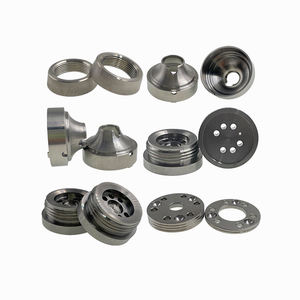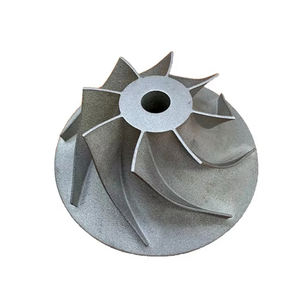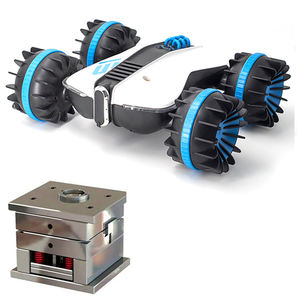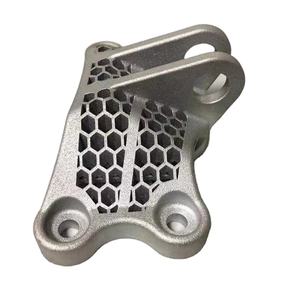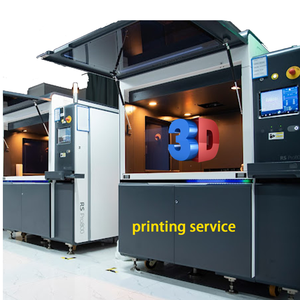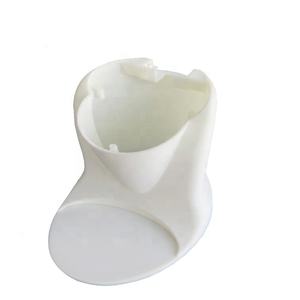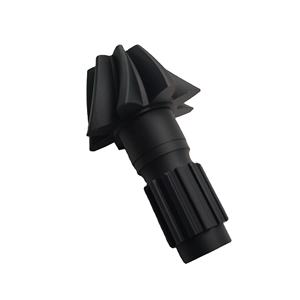Discover a professional 3D printing powder supplier
PRODUCT PARAMETERS
Description
Overview of 3D resin SLA/SLS prototyping 3d printing for industrial products
3D printing, also known as additive manufacturing, is a transformative technology that allows the creation of three-dimensional objects by depositing materials layer by layer based on digital designs. This process opens up a new world of possibilities in product design, customization, and production, revolutionizing various industries including healthcare, aerospace, automotive, consumer goods, and more.
Customization & Personalization: One of the key advantages of 3D printing is its ability to create highly customized products tailored to individual needs or preferences, from prosthetics to fashion accessories.
Complex Geometry: 3D printing excels at producing intricate shapes and geometries that would be extremely challenging or impossible to manufacture using conventional methods, such as internal lattice structures or organic forms.
Rapid Prototyping: It significantly speeds up the product development cycle by enabling designers and engineers to quickly produce physical prototypes for testing and refinement.
On-Demand Manufacturing: The technology supports small-batch or even one-off production runs economically, reducing the need for large inventories and allowing for just-in-time manufacturing.
Material Diversity: A wide range of materials can be used in 3D printing, including plastics, metals, ceramics, composites, and even biomaterials, each offering unique properties for specific applications.
Reduced Waste: As compared to subtractive manufacturing techniques, 3D printing only adds material where needed, leading to less waste and a more sustainable manufacturing process.
Features of 3D resin SLA/SLS prototyping 3d printing for industrial products
Design Flexibility: The technology enables the realization of complex designs without the constraints of traditional manufacturing tools and molds.
Functional Integration: Parts can be designed with integrated features such as channels, cavities, or interlocking components, which can enhance functionality or simplify assembly.
Lightweight Structures: Advanced 3D printing techniques allow for the creation of lightweight yet strong structures through optimized designs and the use of lattice structures or composite materials.
Improved Performance: By precisely controlling material composition and structure, 3D printed parts can exhibit enhanced mechanical, thermal, or electrical properties.
Cost-Efficiency for Complexity: While 3D printing may not always compete with mass-production methods for simple parts, it becomes increasingly cost-effective as the complexity of the part increases.
Innovative Applications: From medical implants that match a patient’s anatomy perfectly to aerospace components that reduce weight and increase efficiency, 3D printing pushes the boundaries of what’s possible in product design and engineering.

(3D resin SLA/SLS prototyping 3d printing for industrial products)
Specification of 3D resin SLA/SLS prototyping 3d printing for industrial products
SLA and SLS 3D printing usage light or lasers to construct industrial models directly from digital styles. SLA uses liquid resin solidified by ultraviolet light. SLS utilizes powdered material fused by a laser. Both approaches create extremely solid parts suitable for requiring tasks. These parts take care of stress well. They stand up to warm better than many other plastic models. This toughness comes from the products and the printing process itself.
Accuracy is a major advantage. Shanty town and SLS generate get rid of extremely fine information. Limited resistances are attainable. Complicated shapes and interior attributes publish dependably. This accuracy is crucial for useful screening and fit checks. Engineers obtain parts matching the last design carefully. Surface area coating is normally smooth straight off the printer. SLA components commonly have a somewhat glossy look. SLS parts have a penalty, a little grainy appearance. Both finishes generally need much less sanding than various other 3D printed components. This conserves time.
The printed parts are not always last. Support frameworks are usually needed throughout printing. These supports need to be gotten rid of by hand. Run-down neighborhood components call for washing in solvent to eliminate excess fluid material. SLS components need cleaning to eliminate loosened powder. Some applications need additional steps like sanding or painting. This post-processing makes sure the part fulfills all needs. Despite this, the total procedure is quickly. Models are ready in days, not weeks.
These techniques are suitable for complex, useful models. They function well for components requiring high strength or warmth resistance. They are best for screening type, fit, and in some cases function. Aerospace, auto, and medical gadget firms use them regularly. They validate styles before costly tooling begins.

(3D resin SLA/SLS prototyping 3d printing for industrial products)
Applications of 3D resin SLA/SLS prototyping 3d printing for industrial products
Several sectors now utilize 3D resin printing, especially SLA and SLS, for prototyping commercial items. This technology builds parts layer by layer utilizing light or lasers to strengthen liquid resin or fuse powder. The results are extremely exact versions and practical components.
Medical gadget makers depend heavily on SLA. They create exact surgical guides, custom dental versions, and biocompatible hearing aid shells. The smooth surfaces and fine details are best for patient-specific applications needing a close fit. Doctors test these parts before full production.
Factories utilize printed resin components for tooling. Jigs and components that hold components throughout assembly are printed quickly. Custom-made evaluation assesses to inspect product measurements are made overnight. These tools are strong enough for the factory floor and save substantial time and money contrasted to metal tooling.
Designers evaluate brand-new layouts making use of functional prototypes. Shanty town parts let them examine the shape, fit, and just how components relocate with each other. SLS components are tougher, helpful for checking just how components take care of stress and anxiety, warmth, or wear. Discovering problems early stops pricey errors later. Style cycles accelerate.
Some organizations even use SLA and SLS for final, low-volume manufacturing. When conventional molding is too expensive for small sets, printing offers a service. Companies make custom-made parts, specialized rooms, or spare parts on demand. The material residential properties meet the needed specifications.
Company Profile
3D Printing Passion is a trusted global chemical material supplier & manufacturer with over 12-year-experience in providing super high-quality 3D printing powder and relative products.
The company has a professional technical department and Quality Supervision Department, a well-equipped laboratory, and equipped with advanced testing equipment and after-sales customer service center.
If you are looking for high-quality 3D printing materials and relative products, please feel free to contact us or click on the needed products to send an inquiry.
Payment Methods
L/C, T/T, Western Union, Paypal, Credit Card etc.
Shipment
It could be shipped by sea, by air, or by reveal ASAP as soon as repayment receipt.
5 FAQs of 3D resin SLA/SLS prototyping 3d printing for industrial products
What’s the difference between SLA and SLS printing?
Both use lasers. SLA prints liquid resin. It hardens the resin layer by layer. SLS prints powder. It fuses plastic powder particles together. SLA needs support structures. SLS prints support-free because powder holds the part.
Are SLA and SLS parts strong enough for real use?
Yes. They are strong. Industrial resins and powders exist. These materials mimic production plastics. They handle stress well. They resist heat. They endure chemicals. Material choice matters. Pick the right resin or powder for your job.
What materials can I use?
Many choices exist. SLA uses resins. These include tough plastics, flexible rubbers, clear materials, and high-heat resins. SLS uses nylon powders. Nylon 12 is common. It’s strong and durable. Nylon 11 is also used. It offers higher impact strength.
How precise are SLA and SLS parts?
Very precise. They capture fine details well. SLA often gives smoother surfaces. SLS parts are strong but slightly rougher. Both methods hold tight tolerances. This is good for engineering fits. Post-processing like sanding improves the finish.
What are SLA and SLS best for in industry?
They are great for prototypes. You get functional parts fast. They work well for custom jigs and fixtures. They make low-volume end-use parts. Complex designs are possible. This includes parts impossible to machine. SLS is good for moving assemblies. The parts don’t need glued joints.

(3D resin SLA/SLS prototyping 3d printing for industrial products)

